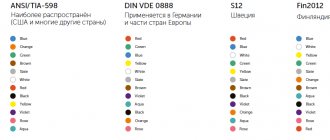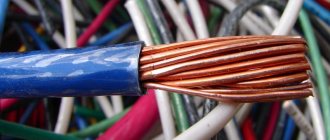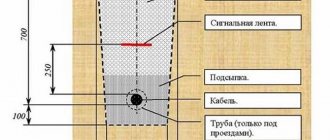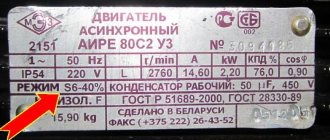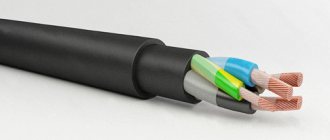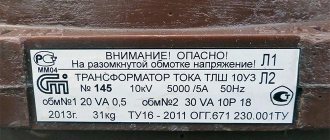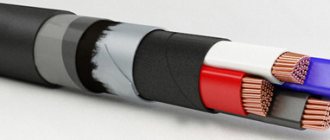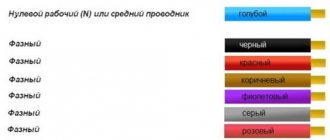Twisted pair 28 AWG has long ceased to be a novelty on world markets. It is usually used to simplify wiring in cabinets and racks overcrowded with cables. Over the years, these cables have gained their fans and today are an indispensable component of high-density solutions in data centers and telecommunications rooms.
What is 28 AWG cable?
This is a patch cord cable that uses thin (28 AWG - 0.381 mm diameter) stranded conductors (7 x 0.127 mm). This design distinguishes it from conventional patch cables, which have conductors of 23, 24 or 26 AWG (0.8, 0.61 or 0.48 mm, respectively). To provide similar performance, thin cables must be manufactured from only the finest copper using the most modern equipment. RJ-45 connectors for such cables have a special design that guarantees reliable fixation of the connector on the cable, the conductors in the connector, and the contact of the gold-plated knives with the copper conductors.
Let's take a closer look at the benefits of using 28 AWG cables.
American wire gauge
AWG
The abbreviation AWG itself is of American origin and stands for American Wire Gauge, which translates as “American wire gauge”. It does not indicate the diameter of the internal cores in millimeters, which is what we are used to, but the number of runs of the cable through the forming machine in the production process.
For example, a 24 AWG wire has a smaller core diameter than a 22 AWG wire because during manufacturing the first cable passed through the molding machine 24 times, and the second only 22.
Examples of wires according to the AWG (American wire guide) standard
The calibration, in accordance with the presented standard, differs slightly from the standard nomenclature of diameters in millimeters. Recalculation into the usual dimensions of a single-core and stranded conductor is carried out using different formulas.
The AWG standard itself concerns not only power cables and wires used in electrical wiring. It is also used in the digital industry, for example for marking HDMI and USB cables, twisted pairs, etc.
Space saving
Typically, the diameter of these cables is much smaller than standard ones. For example, the diameter of a 28 AWG cable is 4.1 mm, and a standard 24 AWG cable is 5.9 mm, that is, 28 AWG is almost one and a half times thinner. The differences in diameter are especially noticeable in photographs showing bundles of standard cable and 28 AWG cable. When you calculate the physical dimensions of cable harnesses, it becomes apparent that using fine-strand cables can save more than 50% of the space in cable ducts and managers compared to traditional cables, a very significant difference for congested telecom rooms and data centers.
Where does AWG marking come from?
AWG wire marking table
The shape of the cable cores is similar to ordinary copper wire.
In the USA, wire was previously produced using the drawing (pulling) principle. To do this, the workpiece was passed through the rollers of the machine. For example, there is a workpiece with a cross-section of 12 mm. To reduce its diameter to the required one, the wire was pulled through the calibration hole a specific number of times, as a result of which it was stretched, the length indicator increased, and the diameter indicator decreased. So from the 12th diameter it was possible to make the 10th or 8th.
Each subsequent broaching procedure lowered the section and added one to the AWG value. At the start of the process, a workpiece with the largest caliber AWG 0 is used (corresponding to the thickest cable). With one wire pull, an AWG value of 1 will be obtained. If the workpiece passes through the machine twice, an AWG value of 2 will be obtained, and so on in increasing order.
The largest calibers larger than AWG 0 are designated AWG 00, AWG 000, etc.
This marking is a mirror image of the Russian one. We have become accustomed to the fact that the larger the number, the larger the cross-section of the conductors. Here everything is different - the larger the gauge value, the smaller the diameter of the conductors.
Ease of maintenance
The more free space between switching ports, the easier and more convenient it is to maintain them - it’s hard to disagree with this statement. 24 AWG cables often block access to equipment ports, but using thinner cables will give your fingers much more freedom, and you will feel how comfortable it is to hold the connector in your hand when reconnecting and adding new connections. Identifying patch ports will also be easier because most of the equipment will remain visible rather than hidden behind a cable fence, as is the case with standard cables.
Cable applications
Application in vehicles
Cables marked AWG are popularly called twisted pair, since their cores are woven in pairs and form a single wire. There are many industries using such cables.
The main ones:
- Electrical supply of socket networks and diode lamps in domestic and industrial premises. Often the current in such lines does not exceed 24V, and the most common voltage is 12V. This scheme makes it possible to reduce energy costs and is safer than 220V lines.
- Arrangement of wiring in the field of telephony and communications, for example, as lines for connecting to the Internet or local networks.
- In fact, all electrics in vehicles are represented by AWG cables of different gauges. The most commonly used twisted pair is 23 AWG with a longitudinal section, where the conductor can be either single-core or stranded. Power from the battery to the starter and motor is supplied using thicker wires labeled 16 AWG.
TV backlight using AWG wires - These conductors are also used in music centers and televisions. For example, headphones and microphones use 22 or 24 AWG twisted pair, the cross-section in mm of which will be indicated below.
- Cables with the smallest gauge, less than 26 AWG, are used in car alarms, temperature sensors for gas or electric boilers, as well as in automatic fire extinguishing systems. They cannot withstand high voltages, but for networks with low current values they are the best option. For example, 28 AWG wires are widely used in automobile airbag contactors. 30 AWG cable is widely used in Internet connection outlets.
It is strictly forbidden to connect low-current wires to a fixed 220V/380V network. This will inevitably lead to a short circuit.
All of the above areas of wire application are key; in practice, there are significantly more of them. In these industries, non-standard gauge conductors are often found performing data transmission functions.
Low-current networks do not pose a threat to people and animals. The impact of such current is literally not felt by the human body; such networks are the safest and are used in astronautics and other technical industries. Even during open contact with bare wires, a person does not feel an electric shock, so repair work can be carried out without disconnecting the network.
Fiber optic cables manufactured using US technology and marked as 24 AWG (in mm equals 0.644) are actively used. Such networks are stretched both externally and underground. They are designed to transmit data at high speeds.
Greater efficiency
28 AWG cables meet or exceed TIA 568-C.2 specifications and pass all required tests. But today, only 22-26 AWG cables are included in the standard. It is likely that in the new version of the standard 28 AWG will be added to it. Another advantage of 28 AWG cables is that their thin conductors have higher NEXT and PS-NEXT levels because they have less copper in the jacket. A high NEXT level is a good indicator of cable performance because Bandwidth is calculated as the difference between the NEXT value and the attenuation: Bandwidth = NEXT - Insertion Loss.
Cable design and composition
In accordance with the task being solved, conductors marked as AWG can have different gauges and types of external winding.
This primarily applies to single-core conductors with different base thicknesses and an outer insulating layer of polypropylene foam. The core can be braided and consist of several layers of aluminum or copper strands twisted in a spiral manner. Their thickness index directly affects the degree of current resistance - the greater the number of cores and their thickness index, the weaker the resistance value and loss per meter of conductor will be. This value also affects the degree of heating of the metal under increased loads. Large-caliber conductors are more resistant to heat, which significantly extends the life of common lines.
Performance characteristics
AWG standard wiring has the same technical characteristics and operating conditions as cables familiar to Russian electricians. Therefore, these types of conductor products have common features:
- The cable insulation must not be damaged. This point should be checked when laying or installing wiring. Cracks and holes in the protective insulating layer will lead to moisture entering the cable cavities and the risk of it burning out.
- AWG wire is selected according to the permissible current and operating voltage. If the current value is exceeded, the cable insulation will melt. And if you overdo the voltage, an insulation breakdown will occur.
- Along the walls, cables are laid in separate fire protection. For example, in an installation channel or corrugation. This rule is especially relevant for wooden buildings.
- There should be no open sections of current-carrying conductors. Regardless of voltage. All connections are sealed with insulating tape or heat-shrinkable tubing.
Heat Shrink Waterproof Splice for AWG
From a design perspective, AWG is no different from other types of installation wire. The only difference is in the markings. The higher the gauge of the wire, the thinner it is. Such a system is the opposite of that adopted in the countries of the post-Soviet space.
AWG wire is universal. It is suitable for installation of lighting systems, auto electrics, sound and signal networks. When using it, the main thing is not to get confused about the diameter of the current-carrying wires. There are special formulas for calculating the required wiring cross-section and converting it into the usual square meters. mm.
AWG Stranded Wires
22 AWG stranded
Stranded wires are somewhat more complex in their design, so it is extremely difficult to correctly calculate the load that is comfortable for them. You need to start from the characteristics of one core and calculate the coefficient ratio.
The cables themselves, the caliber of which is indicated by the number before the abbreviation AWG, can have a cylindrical shape or the shape of a triangle woven into a solid rod. Due to the elasticity of the metal, the wire can be twisted at various angles, which is very convenient for installation work in hard-to-reach points, for example, wall cable ducts.
The insulating layer made of polypropylene or PVC is also highly flexible and can withstand mechanical stress when sifting the soil or deforming part of the highway. The insulation is absolutely dielectric, so even when connecting cable bundles to each other, a short circuit is excluded.
UTP twisted pair cable (U/UTP), category 5, 100 pairs (24 AWG)
In individual twisted pairs of optical fiber, excluding the standard jacket, there is a reinforcing thread between the core and the insulating layer, which is twisted in a spiral. It gives the product strength even during twisting. This insulation prevents the wires from stretching, constantly returning the core and outer layer to acceptable levels.
A separate class should include television cables for transmitting a signal from an antenna or amplifier. These conductors have a copper core, which is sealed in polyethylene foam. From the center of the cable to the edge there is a foil sheath, which is responsible for the delivery of negative particles. The outer layer is PVC insulation that tightly fits the entire product. The conductor is assembled using special metal adapters with a tightening apparatus. They securely fix the wire and guarantee accurate contact.
Copper wires have greater strength than aluminum wires. Therefore, their service life is longer. They are less susceptible to wear and tear from mechanical impacts, but the cost of such products is higher.
What types and categories of twisted pair cable are there?
Twisted pair is a type of communication cable that consists of one or more pairs of insulated conductors, twisted together (with a small number of turns per unit length), covered with a plastic sheath.
Twisting of conductors is carried out in order to increase the degree of connection between the conductors of one pair (electromagnetic interference equally affects both wires of the pair) and subsequent reduction of electromagnetic interference from external sources, as well as mutual interference when transmitting differential signals.
To reduce the coupling of individual cable pairs (periodic bringing together of conductors of different pairs) in UTP cables of category 5 and higher, the wires of the pairs are twisted with different pitches.
Twisted pair is one of the components of modern structured cabling systems. Used in telecommunications and computer networks as a physical signal transmission medium in many technologies, such as Ethernet.
Types of cable
The design of twisted pair cables can be either with or without a screen. For a home or office network with short distances and without electromagnetic interference, a cable without a protective shield is quite suitable. For long distances, as well as in places with electromagnetic interference, you need to use cables with a protective screen
Shielding provides better protection from electromagnetic interference, both external and internal, etc. The entire length of the screen is connected to a non-insulated drain wire, which unites the screen in case of division into sections due to excessive bending or stretching of the cable. In local networks operating at speeds of 100 or 1000 Mbit/s, mostly unshielded cables are used. However, it is worth noting that for high-speed networks 10 Gbit/s, 40 Gbit/s, 100 Gbit/s, standards specify the use of only shielded cables.
- UTP or U/UTP - (Unshielded twisted pair - unshielded twisted pair) - the cable does not have a protective shield.
- FTP or F/UTP - (Foiled twisted pair - foil twisted pair) - the cable has one outer common protective layer of foil.
- STP - (Shielded twisted pair - shielded twisted pair) - the cable has a screen for each pair and external protection like a mesh.
- SSTP or S/FTP - (Screened Foiled twisted pair) - this cable has foil protection for each pair, as well as an external screen.
- U/STP - (Unshielded Screened twisted pair - unprotected cable with twisted pair shielding) - the cable does not have a common screen, but each pair has foil protection.
- SFTP or SF/UTP - (Screened Foiled Unshielded twisted pair - shielded twisted pair with protection) - has two external shields. One is made of copper mesh, and the second is made of foil screen. There is a drain wire between them.
The main difference is the presence and type of screen. The twisted pair shield serves to protect the signal from external interference. For example, when it is not possible to lay twisted pair cables separately from power cables. In addition, each manufacturer may add other designations depending on the cable design, for example:
- AWG - (American Wire Gauge) wire gauge - American system for marking wire thickness. Conductors have a certain cross-section, but more often on the cable it is not the conductor cross-section that is indicated, but the AWG value.
- monocore - (English solid) or stranded conductor (English patch). The most widespread, as cheaper, is monocore. Stranded core is used in installation areas where frequent cable bends are possible, as well as for the manufacture of patch cords. A patch cord is a piece of cable of a certain length with connectors at the ends for connecting two digital devices.
- core diameter - from 0.4 to 0.64 mm. According to the standard, in the 5th and 6th categories, conductors with a diameter of at least 0.51 mm or 24AWG according to American marking are used. A non-certified cable may have cores with a diameter of 0.4 to 0.5 mm, which is usually sufficient for connecting home Internet.
- number of pairs - the number of pairs can be up to 1000. For computer systems, a 4-pair cable is used (denoted as 4x2x0.51). All four pairs are used only when creating networks with speeds up to 1 Gbit/s. In most cases: small office networks, home Internet connections, and other networks with speeds up to 100 Mbit/s, only two pairs are used. For such networks, as well as for alarm devices and intercoms, a 2-pair twisted pair is produced: marked accordingly 2x2x0.51.
- sheath - in this regard, a twisted pair cable is just like other types of cables: the outer sheath depends on the conditions of installation and operation of the cable.
Types of shell:
- PVC - PVC plastic. For internal use.
- PP - polypropylene. For external laying, mainly for high temperatures - up to +140°C.
- PE - polyethylene. For external laying.
- FR - fire resistant. Can work in an open flame for a specified time: today fire-resistant shells are standardized for 30, 90 and 180 minutes.
- LS - Low Smoke - reduced smoke emission during combustion.
- ZH - Zero Halogen is made from materials that do not emit toxic halogen gases when burned.
- B - reservation. Most often, steel tape is used for armor, which is wrapped along the cable.
- C - cable. The cable is needed to tension the cable between buildings.
Thus, the marking U/UTP 4 cat.5e solid 24AWG LSZH is translated as follows: - unshielded cable, contains 4 pairs of 2 cores, category 5, solid - single-wire core, 24 AWG - diameter 0.51 mm, LSZH - halogen-free cable with low smoke emission.
Conductor materials
Conductors in pairs are made of copper, aluminum and bimetal (copper-bonded aluminum). Initially, the conductor material was exclusively copper. However, copper has a drawback - it is high cost, and therefore aluminum, and later bimetallic twisted pair, which costs less than copper, appeared on the market. But are such savings beneficial in the long term? To obtain a high-quality and long-term operating network, and even more so to pass certification, it is only possible by using copper conductors.
- Aluminum conductor (Al) - Aluminum is much lighter than copper - about three times. Well, its main advantage is that it is much cheaper than copper. That's where all the positives ended. The electrical conductivity of aluminum is 1.7 times lower than that of copper, that is, it has higher resistance, which means signal loss with a long cable length. Aluminum is an amorphous material, so over time it “leaks” from the contact, and the signal disappears completely. Also, this metal is susceptible to oxidation when in contact with air, and the surface of the twisted pair loses conductivity over time. Aluminum is less elastic than copper, and twisted pair conductors are twisted together, and the cable itself usually does not lie in a straight line.
- Copper-Clad Aluminum (CCA) - In an attempt to eliminate the shortcomings of aluminum conductor, namely oxidation, copper-clad aluminum conductor was created. Essentially, we have the same aluminum conductor enclosed in a copper sheath. It still beats copper conductor in cost, but due to the complexity of manufacturing, the difference in price is no longer so significant and amounts to about 15%. The conductivity has also become much higher, but it is still lower than that of copper. The copper surface prevents the formation of a surface oxide film and thus allows the quality of the connection to be maintained. And another plus is the weight, since most of the conductor is made of aluminum, the cable is much lighter than copper. Of the minuses, it can be noted that it still cannot be used with Power over Ethernet (PoE) technology, which provides power to devices using the same cables, since the resistance of aluminum is much higher than the resistance of copper, and direct current will flow across the entire cross-section of the conductor, the main part of which is aluminum. And from experience and practice, it is very difficult to find a truly high-quality cable; most of what is offered on the market, when tested, gives a fairly wide range of parameters, and, as a rule, does not correspond to the declared category. In most cases, when using such a cable, it was not possible to configure the network’s functionality even over a short distance (60-70m).
- Copper (Cu) - The use of copper conductors allows you to avoid a large number of problems and significantly increase the service life of such networks, as well as reduce maintenance costs. But you should come to terms with the fact that the cost of a network built using copper twisted pair will be higher than the cost of the same networks laid with copper-plated twisted pair.
There are two types of conductors - solid (from one wire) Solid and twisted (from many thin wires closely adjacent to each other) Stranded. Solid means that the inner conductor is a single piece of copper, while stranded means that the inner conductor is made of several thin copper conductors twisted together. Each type of conductor has different applications, but most readers only need to know about two of them.
Stranded cables (Stranded, pictured above) are more flexible and should be used where the cable will move frequently, such as near work areas. A solid cable (Solid, in the picture below) is not as flexible, but it is more durable, it can be ideally used for permanent networks - both outdoors and indoors.
The cross-section of each twisted pair core is marked in accordance with the AWG (American Wire Gauge) standard. The most common conductors are 26 AWG (0.13 mm²), 24 AWG (0.2 - 0.28 mm²) and 22 AWG (0.33 - 0.44 mm²). The cross-section of a conductor refers to the direct cross-section of the conductive material without the thickness of its insulation.
It is necessary to pay attention to the fact that the smaller the AWG, the thicker the conductors and the better the twisted pair cable in terms of characteristics, since the cross-section is larger and the resistance is lower. That is, a twisted pair cable with 22 AWG conductors will be better than a twisted pair cable with 24 AWG. But such a cable will also be more expensive, since it contains more copper.
Category 5e cables have 24 AWG conductors, while higher quality cat.6a, cat.7, cat.7a cables have 23 AWG, and some manufacturers use 22 AWG twisted pair conductors.
Twisted Pair Category Table
There are several categories of twisted pair cable, which are numbered from Cat.1 to Cat.7 (correctly category or category, abbreviation “cat”, “Cat” should be written with a dot - “Cat.”, because category and cat are different things) and determining the effective transmitted frequency range. A higher category cable usually contains more pairs of wires and each pair has more turns per unit length. Categories of unshielded twisted pair cable are described in the EIA/TIA 568 standard (American standard for wiring in commercial buildings) and in the international standard ISO 11801, and are also adopted by GOST R 53246-2008 and GOST R 53245-2008 (translations of one of the manufacturer's manuals).
| Category | Frequencies, MHz | Note | Description |
| Cat.1 | 0,1(0,4?) | Telephone and old modem lines | 1 pair, not described in EIA/TIA recommendations for data transmission. (in Russia they use a cable without twists at all - “noodles” - its characteristics are no worse, but the influence of interference is greater). In the USA it was used previously, only in a “twisted” form. Used only for voice or data transmission via modem (not suitable for modern systems) |
| Cat.2 | 1(4?) | Old terminals (such as IBM 3270) | 2 pairs of conductors, old cable type, not described in EIA/TIA recommendations for data transmission, supported data transmission at speeds up to 4 Mbps, used in Token ring and Arcnet networks, (not suitable for modern systems). Now sometimes found in telephone networks. |
| Cat.3 | 16 | 10BASE-T, 100BASE-T4 Ethernet | A 4-pair cable, used in the construction of telephone and local networks 10BASE-T and token ring, supports data transfer rates of up to 10 Mbit/s or 100 Mbit/s using 100BASE-T4 technology at a distance of no further than 100 meters. Unlike the previous two, it meets the requirements of the IEEE 802.3 standard. Nowadays it is mainly used for telephone lines. |
| Cat.4 | 20 | token ring, not currently used | The cable consists of 4 twisted pairs, used in token ring, 10BASE-T, 100BASE-T4 networks, data transfer speed does not exceed 16 Mbit/s over one pair.. |
| Cat.5 | 100 | 100BASE-TX Ethernet (LAN, ATM,CDDI) | 4-pair cable, used in the construction of 100BASE-TX local networks and for laying telephone lines, supports data transfer rates of up to 100 Mbit/s when using 2 pairs. |
| Cat.5e | 100 | 1000Base-T | 4-pair cable, Enhanced Category 5 (refined/improved specifications). Data transfer rates up to 100 Mbit/s when using 2 pairs and up to 1000 Mbit/s when using 4 pairs. Category 5e cable is the most common and is used to build computer networks. Sometimes you can find two-pair Category 5e cable. The advantages of this cable are lower cost and smaller thickness. |
| Cat.6 | 250 | Fast Ethernet, Gigabit Ethernet (10GBASE-T Ethernet) | Used in Fast Ethernet and Gigabit Ethernet networks, consists of 4 pairs of conductors and is capable of transmitting data at speeds of up to 10 Gbit/s over a distance of up to 55 m. Added to the standard in June 2002. |
| Cat.6a | 500 | Gigabit Ethernet (10GBASE-T Ethernet) | It is used in Gigabit Ethernet networks, consists of 4 pairs of conductors and is capable of transmitting data at speeds of up to 10 Gbit/s over a distance of up to 100 meters. Added to the standard in February 2008, ISO/IEC 11801:2002 Amendment 2. Cable in this category has either an overall shield (F/UTP) or shields around each pair (U/FTP). |
| Cat.7 | 600 | Gigabit Ethernet (10GBASE-T Ethernet) | The specification for this type of cable is approved only by the international standard ISO 11801, data transfer speeds up to 10 Gbit/s. This category of cable has a common shield and shields around each pair. This category of cable has a common shield and shields around each pair (F/FTP or S/FTP). |
| Cat.7a | up to 1200 | Gigabit Ethernet (40GbE, 100GbE) | Designed to transmit data at speeds up to 40 Gbps over distances up to 50 m and up to 100 Gbps over distances up to 15 m. Common screen and screens around each pair (F/FTP or S/FTP). |
| Cat.8/8.1 | 1600-2000 | 100 Gigabit Ethernet (40GBASE-T) | In development, technical recommendation ISO/IEC TR 11801-99-1 and international standard ISO 11801 revision 3 (for Cat. 8.1), American standard ANSI/TIA-568-C.2-1 (for Cat. 8). Fully compatible with Category 6A cable. Data transfer rates up to 40 Gbps using standard 8P8C connectors. Cable in this category has either a common shield or shields around each pair (F/UTP or U/FTP). |
| Cat.8.2 | 1600-2000 | 100 Gigabit Ethernet (40GBASE-T) | In development, international standard ISO 11801 revision 3. Fully compatible with category 7A cable. Data transfer rates up to 40 Gbps using standard 8P8C or GG45/ARJ45 and TERA connectors. This category of cable has a common shield and shields around each pair (F/FTP or S/FTP). |
Twisted pair crimp circuit
The network connector is usually called RJ-45, although its correct name is 8P8C. And RJ (Registered Jack) is the name of the standard that describes the design of the detachable connection between the plug and the socket.
Twisted pair crimping patterns for RJ-45 connectors vary depending on the purpose of the trunk, technology, and data transmission standard. Both direct and reverse (or cross, so-called cross-link) crimping of the patch cord may be required. In Ethernet local area networks using twisted pair or UTP cable, circuits of the form 568A and 568B are the most popular in accordance with telecommunications standards for commercial building cabling systems. The schemes that have become standard are designed in such a way as to minimize mutual interference in pairs, therefore, when configuring high-load networks, these particular schemes are used.
Conversion table for cable and wire AWG to millimeters
In order not to recalculate the caliber of each conductor to the diameter in square millimeters on a calculator, you can resort to using a table with ready-made numbers:
| Caliber | Diameter mm | Cross section mm2 |
| 0000 | 11,68 | 107 |
| 000 | 10,40 | 85 |
| 00 | 9,26 | 67,4 |
| 0 | 8,25 | 53,5 |
| 1 | 7,34 | 42,4 |
| 2 | 6,54 | 33,6 |
| 3 | 5,82 | 26,7 |
| 4 | 5,18 | 21,2 |
| 5 | 4,62 | 16,8 |
| 6 | 4,11 | 13,3 |
| 7 | 3,66 | 10,5 |
| 8 | 3,26 | 8,37 |
| 9 | 2,90 | 6,63 |
| 10 | 2,58 | 5,26 |
| 11 | 2,30 | 4,17 |
| 12 | 2,05 | 3,31 |
| 13 | 1,82 | 2,62 |
| 14 | 1,62 | 2,08 |
| 15 | 1,45 | 1,65 |
| 16 | 1,29 | 1,31 |
| 17 | 1,15 | 1,04 |
| 18 | 1,02 | 0,82 |
| 19 | 0,91 | 0,65 |
| 20 | 0,81 | 0,51 |
| 21 | 0,72 | 0,41 |
| 22 | 0,64 | 0,32 |
| 23 | 0,57 | 0,25 |
| 24 | 0,51 | 0,20 |
| 25 | 0,45 | 0,16 |
| 26 | 0,40 | 0,12 |
| 27 | 0,36 | 0,10 |
| 28 | 0,32 | 0,08 |
| 29 | 0,28 | 0,06 |
| 30 | 0,25 | 0,05 |
| 31 | 0,22 | 0,04 |
| 32 | 0,20 | 0,03 |
| 33 | 0,18 | 0,02 |
| 34 | 0,16 | 0,0201 |
| 35 | 0,14 | 0,016 |
| 36 | 0,12 | 0,012 |
| 37 | 0,11 | 0,01 |
| 38 | 0,10 | 0,007 |
| 39 | 0,08 | 0,006 |
| 40 | 0,07 | 0,005 |
In the USA, 22 AWG wires are most often used for Internet communications, with a cross-section in mm of 0.644. The maximum gauge for use in industrial applications is not limited in any way, but the most popular conductors are 4 AWG and 8 AWG.
What is AWG cable
This abbreviation stands for American Wire Gauge. This can be translated as "American Wire Standard". Unlike markings in the form of a cross-section of conductors, which is familiar to Russian consumers, this involves the number of passes of the conductor product through the molding machine during its production. Products manufactured according to the American standard cover a wide range of applications: this includes power cables, twisted pairs, USB cords, and electrical wiring components.
Important! During molding, the product becomes thinner and stretched in length, which implies an inverse relationship between the size of the gauge and the diameter: the larger the number marked with the awg cable, the smaller the diameter of its veins in diameter. For example, an awg 26 cable will have thinner cores than an awg 20 cable.
Cable containing 100 twisted pairs
Calculation formulas
The formula for converting calibers to millimeters is as follows:
The indicator 0.005 inches, when converted, is 0.127 mm. The value n is the caliber nomenclature. The presented formula is valid only for solid cores of cables and wires.
The values “36”, “39” and “92” are present in the formula for a reason. In the late 90s, the AWG indicator, the diameter of which is equal to 0.005 inch, corresponded to gauge 36. In those years, this was the thinnest wire. The thickest cable was caliber AWG 0000. The ratio between the smallest and largest diameter is exactly “92”.
The calibration range, starting from marking AWG 36, consists of 38 consecutive calibers and the ratio between them is a constant value. Between adjacent calibers the ratio is 1.1229. This figure is the 39th root of 92.
For large calibers, the role of “n” is the negative indicator -(m-1).
Formulas for calculation
When dealing with AWG wires and calculating their cross-section, you can use the formulas below.
Convert caliber to diameter (inches inch)
Where,
- n - wire gauge;
- dinch - diameter in inches.
Convert caliber to diameter (in mm)
Where,
- n - caliber;
- dmm — wire diameter, mm.
In some situations it is necessary to calculate the wire cross-section by gauge. For a similar case, a formula (simplified) is also derived:
Here,
- An - wire cross-section, sq. mm;
- n - caliber (note the “-” sign);
And finally, a few general formulas that will be useful in calculations. Wire cross-section through diameter:
Where,
- A - wire cross-section, sq. mm (inches);
- d—diameter, mm (inches).
Convert diameter in inches to millimeters:
Here,
- dmm - wire diameter in mm;
- dinch - diameter in inches.
Rules of thumb
The sixth level of the ratio of the diameters of two adjacent AWG calibers is extremely close to 2 (2.005), which dictates the following rules:
- Doubling the cable diameter leads to a reduction in gauge by 6 notches.
- Doubling the cable cross-section entails a reduction in caliber by 3 units.
- Reducing the gauge by 4 units doubles the melting current of the cable.
Lowering the caliber by 10 units increases the area and mass by approximately 10 times and also reduces the degree of resistance by approximately 10 times.
In which countries is the AWG caliber used?
Cable PUGNP
This classification of cable and wire products was developed in the USA and it was there that it became most widespread. In addition, the system is used by Japanese and Chinese companies. In Europe, including the post-Soviet space, a different labeling has been adopted, based on the cross-sectional diameter of the product and its area in square millimeters.
Important! In the USA it is not customary to use millimeters as a measurement unit of length. In technical documentation, inches are used for this purpose. Therefore, the algorithm for converting awg encoding into geometric parameter values has to be adapted to the units familiar to Russia.
terms of Use
Tension Cable
AWG cables have the same insulation layer and outer sheath as traditional metric wire. When installing products and their operation, you must follow the basic rules:
- When laying a line in the ground, it is impossible to install conductors without a protective corrugation or asbestos sleeve.
- When tensioning wires between supports, it is necessary to use guide cables that relieve tension from the conductors.
- If the cable is laid on the bottom of a reservoir, its connections must be carefully insulated with polyethylene foam.
Do not apply more voltage to the conductors than its specific rating - this can lead to overheating and short circuits.
Cable assignment
AWG conductors are used in the same industries as any other similar in structure. Most often these are the following areas of application:
- Construction of communication lines. If there is a screen, the cables can be used to lay the Internet or telephone network.
- Use in audio technology. AWG 22 and 24 transmit sound in some headphone models. This speaker wire is suitable for such purposes due to its high flexibility.
- Most wiring in cars is done using AWG wire. Typically 23 gauge twisted pair is used.
- Connecting LED strips and other low-voltage diode lighting sources. Due to its small thickness and flexibility, it fits conveniently into the grooves for wiring. This property allows you to create a hidden power line.
- Thin wires with a gauge of less than 24 are used in alarm and automation systems. From them lines are drawn for temperature, pressure and humidity sensors of industrial equipment.
Speaker Wire AWG
